A-level




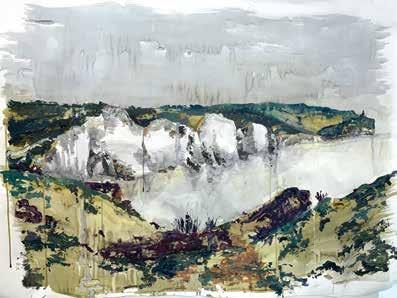
My project began with the theme of ‘Power’, where I started my artistic journey by investigating power struggles between people, inspired by David Altmejd. Following a natural continuation, I explored the power relationship between humans and nature, using David Tress as my source of inspiration for artistic technique. From this, I explored how artists use their art to change our perception of the original object. I was inspired by artists such as El Anatsui, Keith Arnatt and John Dahlsen, who all use discarded objects and intertwine them into their work, giving the rubbish a new purpose. I used worthless traces of human existence such as plastic bottles, fabric scraps, mouldy food, and rusty windows as the primary source of material and the stimuli for my work. My project resulted in a memoir of abandoned entities created through my artistic procedure.







During my Photography A-level, I have explored many different subjects, focusing on a range of experimental techniques to aid my exploration. My initial theme was ‘Identity’. During the first project, we were at a time of uncertainty due to the pandemic. I adapted my work and focused on how people felt at home. I explored ideas about family relationships, isolation, and the rapidly changing world. I researched artists like Carrie Mae Weems. I found her ability to highlight the beauty and overlooked power of the mundane and every day incredibly powerful. I progressed onto distorting photographs both physically and digitally. I did this to try and reflect the psychological affect lockdown had on individuals. Recently, I have mainly focused on photographing architectural structures. I have become fascinated with exploring different ways of creating textures through layering of the geometric shapes present in the buildings I photograph.

Throughout my projects, I have aimed to explore physical and mental disconnection brought on by the pandemic and subsequent lockdown. I visualised these experiences through manipulating light and colour in my images, attempting to reflect the emotional state felt by many in this unprecedented time. Using a range of techniques, such as dark room printing and video, my project evolved from photographing physical isolation, to reflecting psychological states of mind through distorted imagery. Regardless of the project, I have found myself returning to the same reoccurring themes. These themes are concerned with turning thoughts and emotions into visual outcomes. Making the intangible, tangible. To this effect, my work is not only a means of making visually aesthetic outcomes, but a way of processing and understanding the world around me.

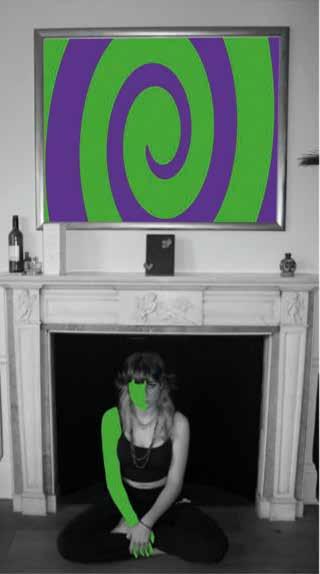




During my project, I have explored the complexity of existence as a theme. The scope of this has allowed me to delve into a variety of subjects and pushed the progression of my ideas further. Through researching different artists and implementing different photographic techniques, my project has developed through a multitude of aesthetics. This has allowed me to convey a range of messages and concepts. My early work focused on exploring the existence of self and finding comfort in isolation. From this, I progressed to explore psychological spaces. My work has transitioned between digital outcomes with explicit intentions, to results which are physical and explore metaphorical representation of existence. Overall, the project encapsulates how we exist simultaneously within ourselves and in the wider world.





My photographic projects have aimed to explore the complexities of memory and the impact of time on the self. I have adapted the media in which I produce photographs and moving images to express milestones in life. Whether using gifs to express the headiness of adolescence or pinhole cameras to create images indicative of the decay of the senses, I aim to reflect a sense of the human condition. Most recently, I have extended this to look at media and world events and how they impact our sense of our surroundings. I have focused on creating visual languages that are confusing and to a degree indecipherable to reflect the confusion caused by our information rich age.







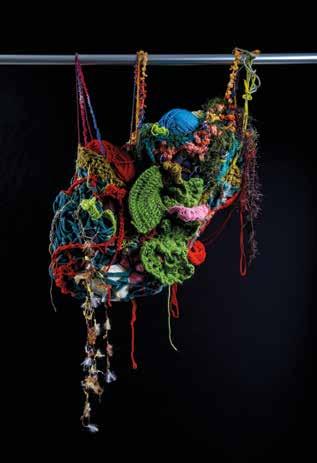
My A-level artistic journey has explored objectification of the female form and rejection of the ‘male gaze’ through the use of colour, pattern, texture and abstraction. I have deployed the lens of a young female artist and my personal journey to focus increasingly on the notion of beauty and the emotions that lie within. From early studies in soft pastel and oil, I have challenged myself out of my 2D comfort zone into 3D for a final piece in clay and crochet that conveys the deep emotion of motherly love and nurture. Female artists, such as Hester Finch, Louise Bourgeois and Olek have inspired me with their diverse approaches, narratives and techniques, but with common sentiments around womanhood that I have connected with.

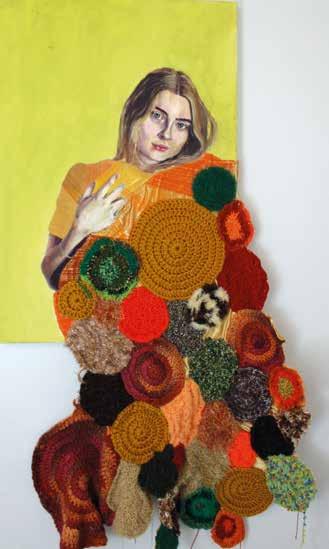





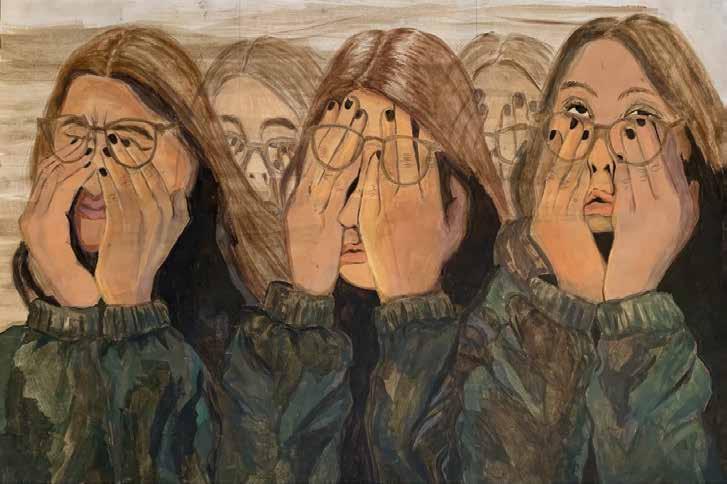
Throughout my transformations project, having been inspired by the transformation that takes place during the process of a movement, I have explored voluntary, involuntary and forced movements. At the start of my project, I looked at voluntary movements in which I researched contemporary artists such as Patricia March, who can transcend the progress of movement through simple daily life events in her artwork. Through researching Ernesto Neto, I investigated movements out of our control, using textiles. Current social and political issues surrounding immigration and refugee crisis were an inspiration in my project when I was researching forced movements. Ultimately, I researched Reena Saini Kallat and Ai Weiwei who both use their interest in political and social borders and their detachment. Experimenting within a very broad range of possibilities allowed me to expand my perception towards the art I am currently creating.





Although the two terms ’movement’ and ‘stationary’ seem contradictory, they are strongly connected in art. Throughout my project, I have explored this concept and have identified various interpretations between the human form and space. Kwangho Shin’s and Francis Bacon’s paintings have inspired me to investigate the relationship between the inner emotions of people in society, their physical bodies and outer appearance using the process of fragmentation and framework. This social aspect of art then led me into researching Antony Gormley and Barbara Licha. I was fascinated by how they show a connection between the stationary sculptures and the changeable outer world, as well as the interaction between the artwork and viewers.

During my experimentation, I have developed an interest in the concept of how the human form and surroundings relate to one another: how the sense of isolation shown in art, people’s unawareness of others, and the spaces they inhibit. I have also learned new techniques, such as the use of fabric, printing, and mark-making. For my outcome, I produced an installation that symbolises the connection between people and society: the abstract patterns on the fabric were developed from patterns on buildings in everyday life. By physically ‘experiencing’ the space, I hope the viewers can focus on both their and other people’s emotions within a community, linking back to Kwangho Shin’s concept of raising awareness of caring for others.


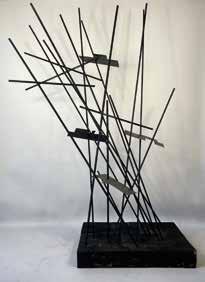

My project began exploring the title ‘Sin’. I began by looking at Tracey Emin and considering the consequences of sinning or being sinned against. I visited an exhibition featuring both Tracey Emin and Edward Munch’s work and comparing the work of the two artists led me to not only experiment with body language and paint in the style of Amy Beager, but to also realise the importance of curation. This discovery shaped the rest of my project as I created a diptych, sculpture, installation, and collage with the art of curation and communicating subconsciously with a viewer in mind. It particularly interested me how different people had the ability to come to different conclusions about what I was saying and how so much of art is dependent on the viewer. In a slightly more light-hearted twist, to finish my project, I considered surrealism and Dadaism – looking at how people draw conclusions from and respond to art that is completely random. This led me also to consider the uncanny and evoking physical and emotional reactions from a viewer by making them deeply uncomfortable.





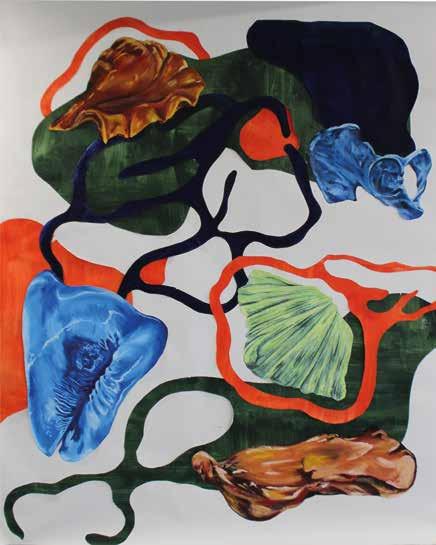
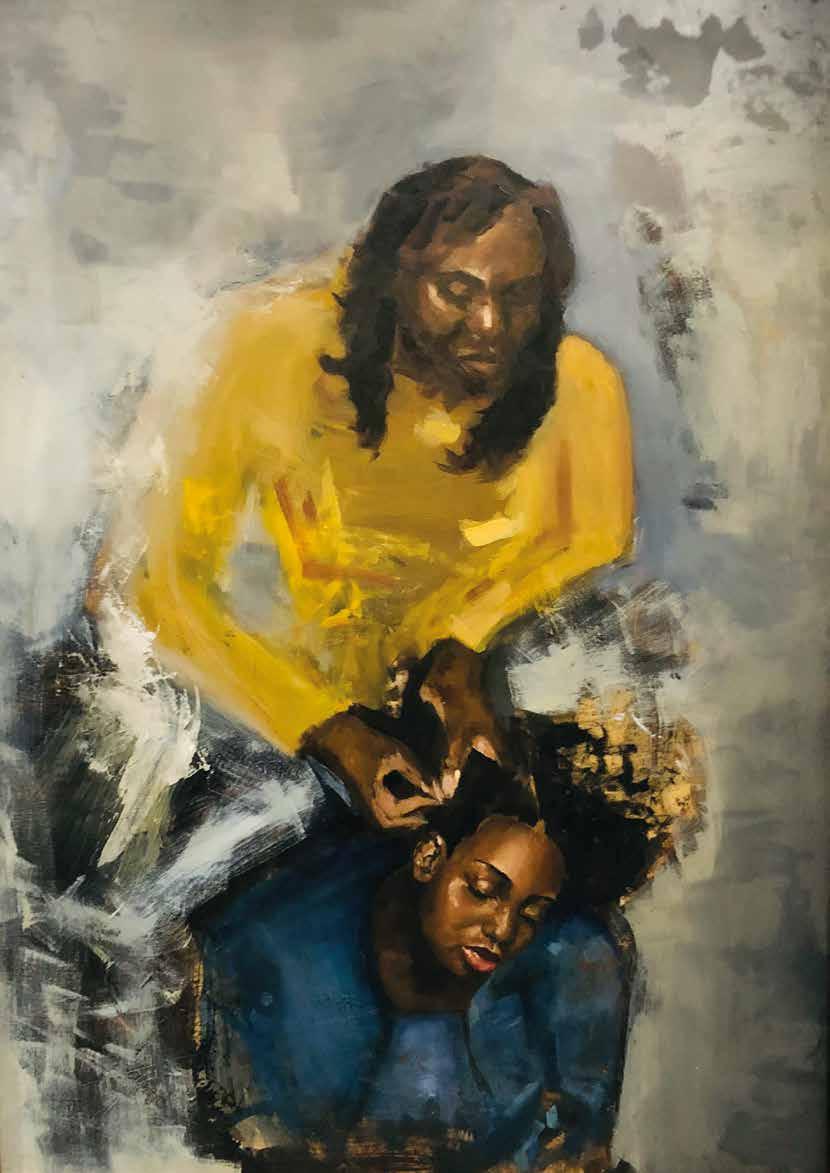
My project considers the relationship between race and art and art’s ability to create an effective dialogue around race. I considered the way art is and was used by white artists to create derogatory presentations of blackness and black people. I investigated the way we had been falsely represented by pre-1900 artists. They had constructed a narrative of inferiority around black people in order to justify slavery and colonisation. However, it was in exploring the ways black artists in the west re-claimed art as a tool to newly form their own identities that I was inspired. Major art movements, such as the Harlem Renaissance and the Negritude movement formed new black identities that restored dignity to blackness and Africaness. These artists were to go as far as providing avenues for the Pan-Africanist, de-colonial, and civil rights movements of their respective times. With the rise in right wing movements, Brexit, the election of both Donald Trump and another known racist in Boris Johnson as well as a new attention placed on racism in our time, following George Floyd’s death, I attempted to form my own fight. To do this, I formed my own blackBritish, female identity. I have really tried to understand what it means to be a black artist in my own time in Britain. I have come to understand that the way I approach race within my art, is locked into the way I discuss, approach and fight racism in the world around me just as it had for many black artists that came before me.




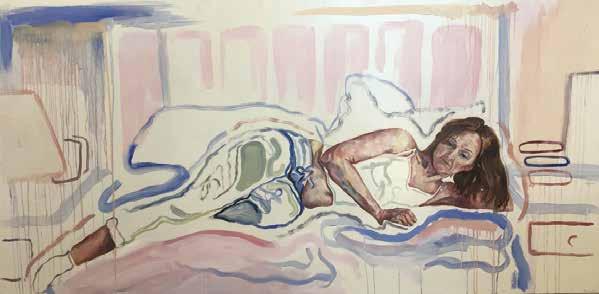
I began studying the importance between ourselves and our surroundings. I found that we are products of our own environments, the voyage into people’s spaces is a true insight of how someone lives their life. I studied the stories told through human interaction, looking at the importance of how preconception is a basis of our judgements and ideas. Toying around with changing narratives, to change preconceptions, was a very insightful part of my art and allowed for me to venture into Surrealism. I enjoyed looking at representing people and environments in surrealist styles focusing on elemental objects and patterns. This influenced the study I did of my Grandma, someone who leads her life through spirituality and she had many stories to tell of the way she lives. I studied both James Turrell and Yves Klein, who both influenced my artistic ideas of the immaterial. I took her physical journey of spirituality and expressed it through intangible and unbodied evidence of human action. My project resulted in an accumulation of pieces exploring spirituality and the significance of metaphysical elements.







I’ve always been interested in how art can be used to communicate experiences and ideas. This study has allowed me to explore the link between composition, lighting and colour. My earlier work focused on still life combinations which utilised the setting and atmosphere to play with the viewer’s interpretations of the art. This led to my realisation of how important space is in art and why painting undertones, background colour and negative spaces influence the mood and experience of the viewer.

I elaborated on this idea throughout my project to create a variety of layered pieces inspired by my visit to Michael Armitage’s exhibition. After researching into the meaning and stories behind his work, it motivated my work to reflect more personal family experiences and perspectives which related to my interest into culture and ethnicity. This allowed me to work with different patterns and prints to question cultural traditions and misconceptions. Taking this further into 3D form, I was able to portray my own culture and what it means to me. By representing it in a ceramic sculpture, which wraps around the torso, it works as a metaphor to illustrate being physically encased and surrounded by my own culture.


My project, titled ‘Distortion’, has allowed me to challenge and explore new and unfamiliar ways of working. Conceptually, I have looked at the societal expectations of the body, juxtaposing this with confrontational images of the body in its natural, unfiltered state. I have extended this to explore abstracting the human form. I have achieved this by using materials that mimic the body, creating outcomes that seem both familiar and unnerving. Combining photography with sculptural forms has allowed me to create a grotesque visual aesthetic that is reminiscent of the body, but also descriptive of the societal pressures placed upon it.




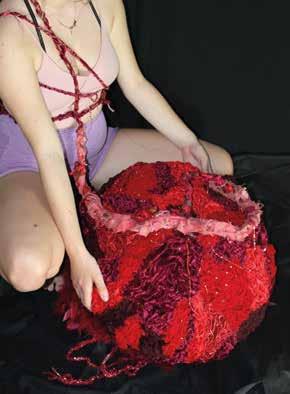

The title of my project was ‘Multiple’, looking at human interaction in public places before moving onto exploring the impact events in our life have on our mental health. I looked at how people can feel isolated both by themselves and in the company of others. This led me to reflect on my own feelings of isolation by painting self-portraits. Continuing to reflect on my personal experience, I looked my self-perception as society conditions us to believe there is only one standard of beauty. I wanted to demonstrate the lost presentation of natural looking female bodies that our generation has been sheltered from in our upbringing, as we only consumed media presenting ‘perfect’ looking women. The subconscious instinct to judge a woman on their appearance is something I attempted to counter in my work, adding confrontational gazes into my portraits, making the viewers reflect on their own mindsets. From looking at artists, such as Susan Grable and Louise Bourgeois, I then continued to explore the strength of females through labour, pregnancy and even periods. The idea that men are the stronger gender is enforced on us throughout our lives. In my work, I highlight the biological phenomenon of the female body, using sculpture to help me broaden the range of mediums I use to present my ideas. I was fascinated how women continued to weaken our bodies using devices such as corsets and now surgery in order to fit the desired body standard. I wanted my work to summarise these issues in conceptual, yet beautiful ways.


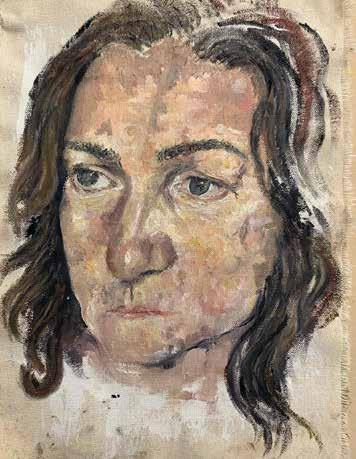

Over the course of my A-level project, I have explored the theme of ‘Perceptions’, being particularly interested in the way in which we can distort and alter the viewer’s understanding of a piece of work through modes of presentation. My project has aimed to explore this idea through various digital and physical distortion methods, most prominently, video, installation, light and even water. A significant leitmotif which carries itself throughout the process is the concept of pushing imagery to the point of abstraction. This led me to explore unorthodox image making methods, such as camera-less photography. This project has opened my eyes to the subtle, less overt messages that can be conveyed through untraditional photographical processes. I have really enjoyed the opportunity to experiment with a variety of mediums, and push the boundaries of what photography can be.
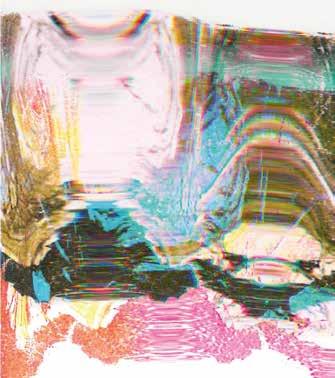

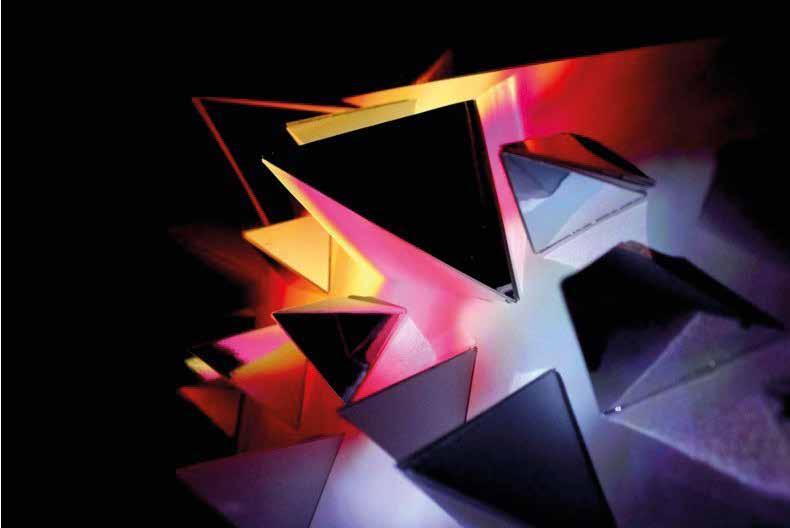

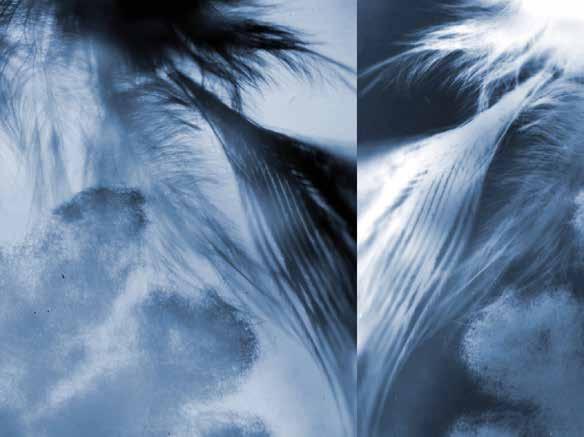

Throughout my project, titled ‘The Human’, I have explored what being human defines, both in the sense of our physicality form and shape, but also socially how we categorise and oppress gender, which is bizarre as it is just an anatomical difference. To begin, I explored human physicality visiting the V&A. What interested me was not just the realism of sculptors Canova or Giambologna, but the difference in representation of gender, how shape evokes masculine or feminine attributes even when disregarding subject. Inspired by this, I produced a composition which was androgynous, taking inspiration from the Baroque period. I then through collage created something which was neither gender, but uncanny. Considering the uncanny, and what makes a form human, I looked at Altmejd’s collection of ‘Body Builders’, sculptures that don’t resemble direct human forms; however, do show tactile texture of human creation. I produced a wax bust and experimented with melting, allowing a sculpture to take its own creation. I also produced paintings using texture and three dimensionality. Taking a slight twist in my project, still Inspired by the idea of self-creating art, I interviewed women discussing personal experiences living in 21st century. Their words built and woven into my next series of work, using etching, collage, and text. This led me to explore feminist art, particularly Rego’s ‘Dog Women’. I produced a piece that instead of using text, used symbolism discussing the human restrictions placed upon female behaviour. Finally, leading from this idea, I looked at female physical restriction, inspired by Horn and Bourgeois, producing mixed media outcomes using metals, latex and thread, all representing female oppression both socially and physically.








My body of work unpacks a variety of subtopics, including nostalgia, rituals and belief inspired by a range of contemporary artists, such as Grayson Perry, Bill Viola and Olafur Eliasson. A breakthrough moment in my project was when I took a painting of my childhood home and burnt it. I made a video of the process and used the ashes to create paper pulp, which I later used as a material to sculpt a series of urns. In doing so, I touch on themes of impermanence, memory and transformation. I focused a lot on the curation of my art; how certain technical features such as lighting, body positioning, movement, and scale can cause a viewer to feel and change the way they move within a space. This concept has influenced my work to tap into the human experience and address existential subject matter, which has challenged my art to be interactive and enticing.
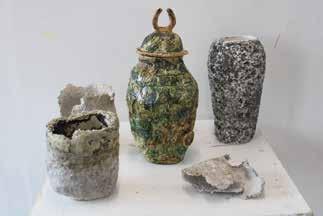


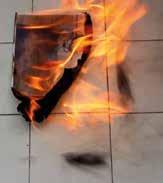

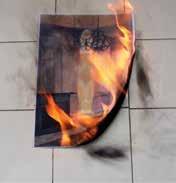





Throughout my project, ‘Journeys’, I explored many different techniques and subject matters. Some of the main themes I have explored have been concerned with socio-political events and culture.

Through looking at artists such as Robert Rauschenberg and Hannah Hoch, I have been drawn to look at phenomena that impact the lives of women. Through this, I was led to reflect on my own cultural heritage. This challenged me to turn the camera back on my family, creating personal work that examined bonds and relationships.

Through my final project, I wanted to challenge myself to test the possibilities and limitations of the photographic medium, exploring installation, collage, and sculpture. This has resulted in outcomes that challenge the viewer to move around, and physically interact with the work.

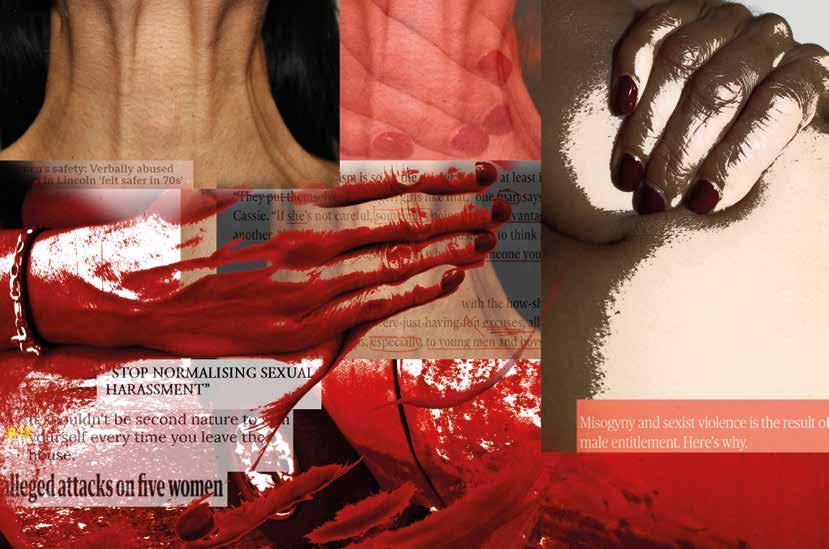

Throughout my project, ‘Self’, I investigated themes such as insecurity, self-perception, and femininity. Having initially focused on body image, flaws, and self-care rituals, I went on to look at the female body in more detail. I researched artists such as Tracey Emin, Alison Watt and Ashley Armitage. These practitioners inspired me to focus on the feminine form as well as the strain and hardship the female body faces. Through my use of experimental techniques, I explored how materials such as paint and fabric can reflect the human form, and visually describe the beauty, power, and force of the female body. My practices have sought to challenge societal expectations of women and their bodies, highlighting the nuances of female experiences. In my most recent work, the focus has been about tension; initially concentrating on bodily and surface tension and later moving on to explore social and political conflicts.




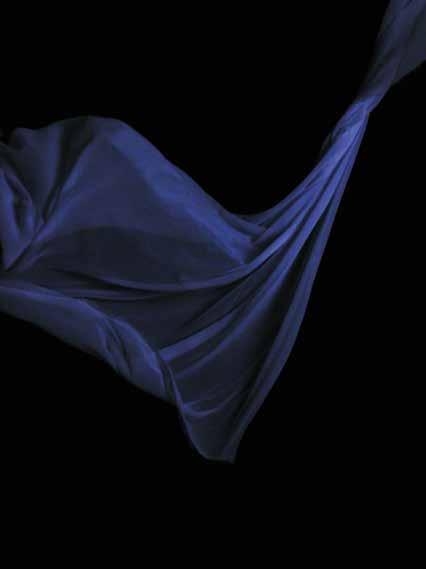




Throughout my topic of ‘Contrast’, I have undertaken a creative journey having researched several inspirational artists, such as Edward Hopper, John Monks, Diana Al-Hadid and Isamu Noguchi, to name a few. Contrast allows an individual to convey meaning and expression, considering many elements of art, such as line, space, scale, tone, colour and texture. For me, I have thoroughly enjoyed exploring light and dark contrast, known as chiaroscuro and the emotion it brings to the work, as well as opposing colours and textures, which have all helped to add energy, atmosphere and drama to my work. Contrast helps define the identity of a work and all of my chosen artists produced abstract, unique, distinctive styles which make them instantly recognisable and this was what helped drive me to create something unique, maybe eccentric, but certainly distinctive and for me, very special. Recreating so many artistic styles in art helps develop skills and build technique, but only when something has personal meaning does it become unique in capturing the imagination and this is what I have thoroughly enjoyed whilst studying my A-level art topic of ’Contrast’.





